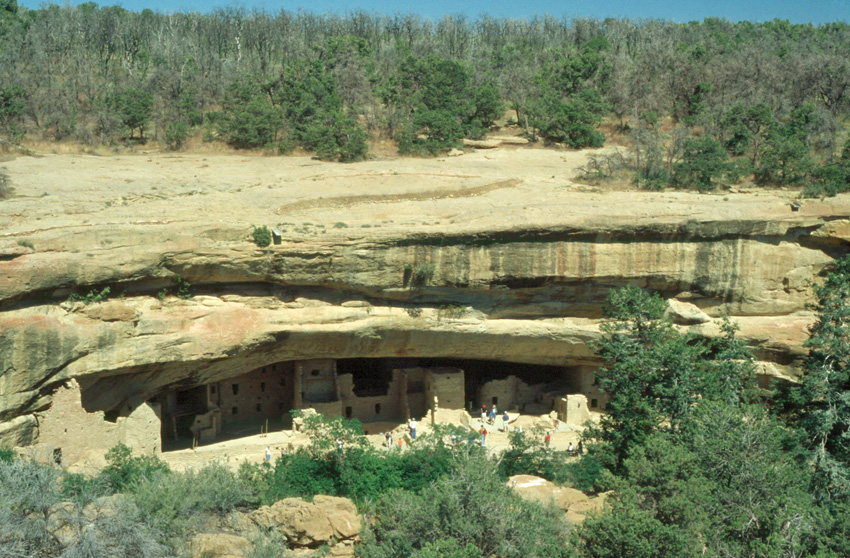
The image below shows stone used in Spruce Tree House. It is chunks of sandstone from the Cretaceous-age Cliff House Formation, a rock layer in which marine fossils have been found. The stones are held together with a lumpy mortar made largely from the clay of an underlying shale bed.
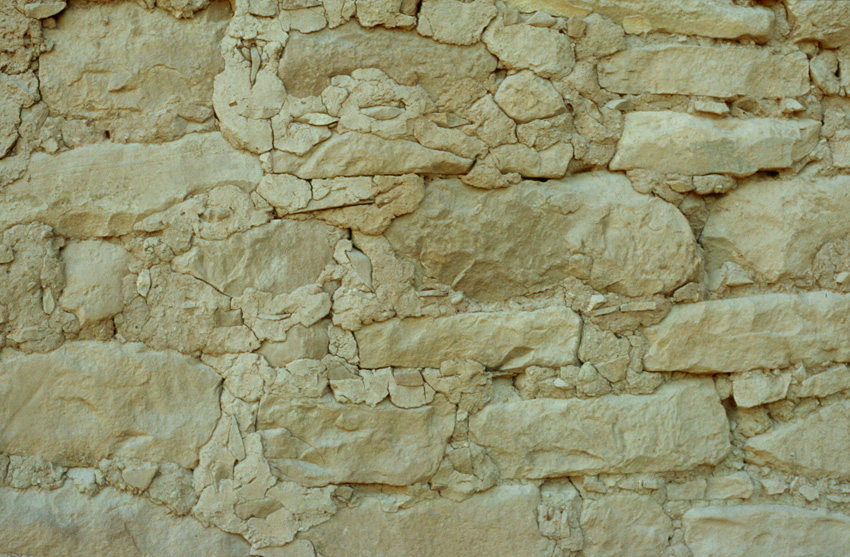
The next five images move from right to left though Spruce Tree House. In the image below, note the double wall of stone used for the outside wall, as compared to the single thickness used for inner walls.
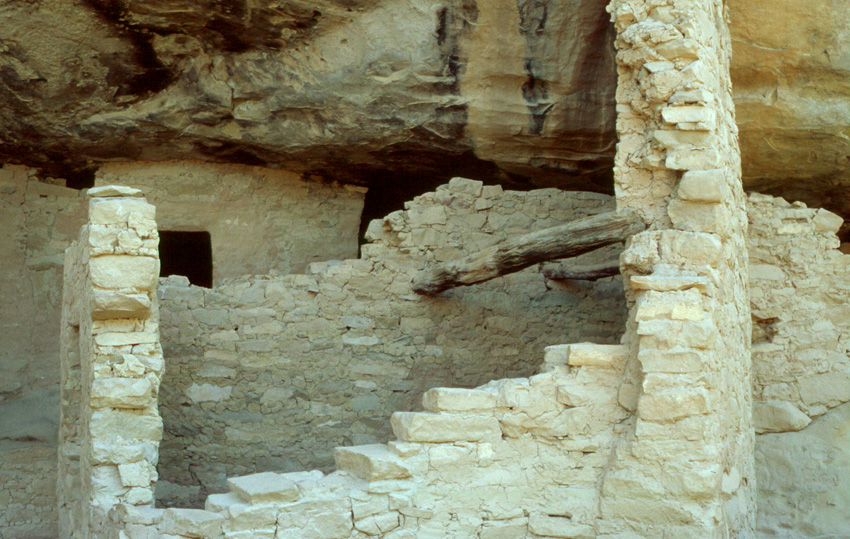
This image shows interior walls and windows or doorways. In the upper center, above the park service marker, note the beige plaster covering the stone. When we see stone ruins, we tend to assume walls were left as bare stone, but in fact they were usually covered. That's true here: a plaster made from clay in the underlying shale was used to cover the interior walls. Furthermore, it was painted with decorations (akin to the decoration of European cathedrals). The smaller image below shows both the plaster on the walls and the decor (in the black square).
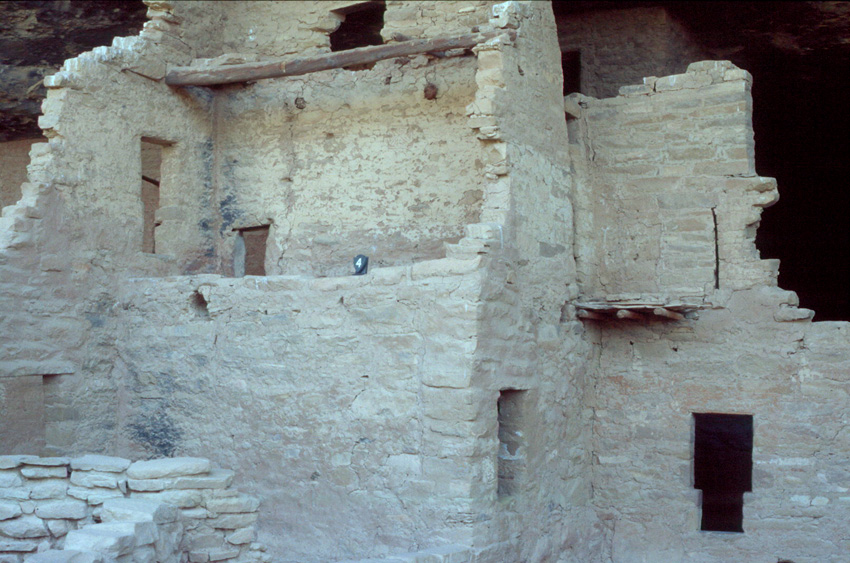
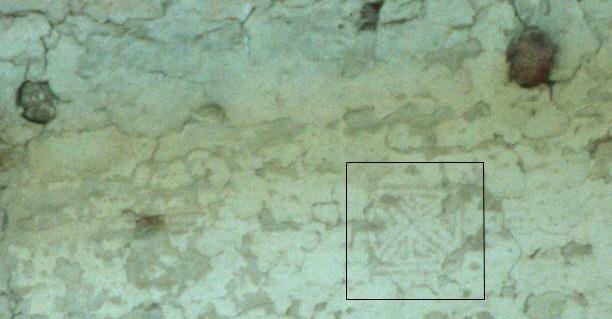
Farther left, we encounter the opening to a kiva, a round room accessed from a hole in its ceiling. Also note how the wall behind and above the kiva goes all the way to natural rock of the ceiling, with a gapless seam between the two. There are more rooms behind that wall.
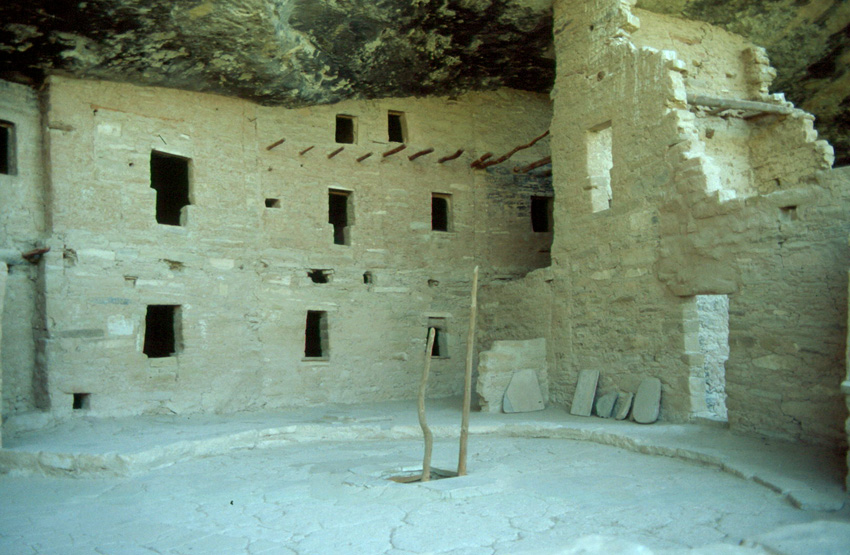
Finally, we get to the leftmost rooms.
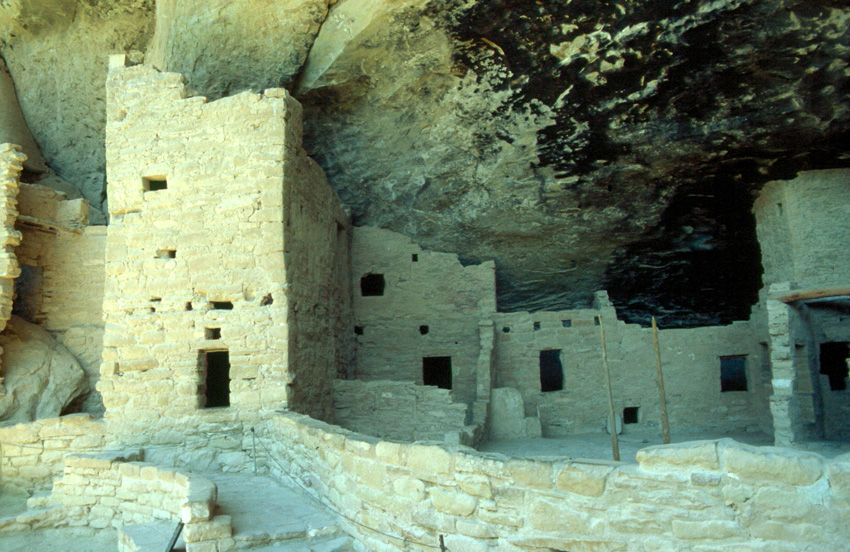
Spruce Tree House consisted of 114 rooms and 8 kivas, and it seemingly housed 100 to 125 people. It was built by the Ancestral Pueblo people, known previously but perhaps inaccurately as the Anasazi. The Ancestral Pueblo people had lived at Mesa Verde since about A.D. 550, but the cliff dwellings were not built until the 1190s to 1270s. The dwellings were abandoned soon thereafter and were deserted by 1300s, leaving behind the mystery of why such enterprising people gave up such well-built homes.
Spruce Tree House is of course just one of the many cliff dwellings in Mesa Verde National Park. For example, there's Cliff Palace:
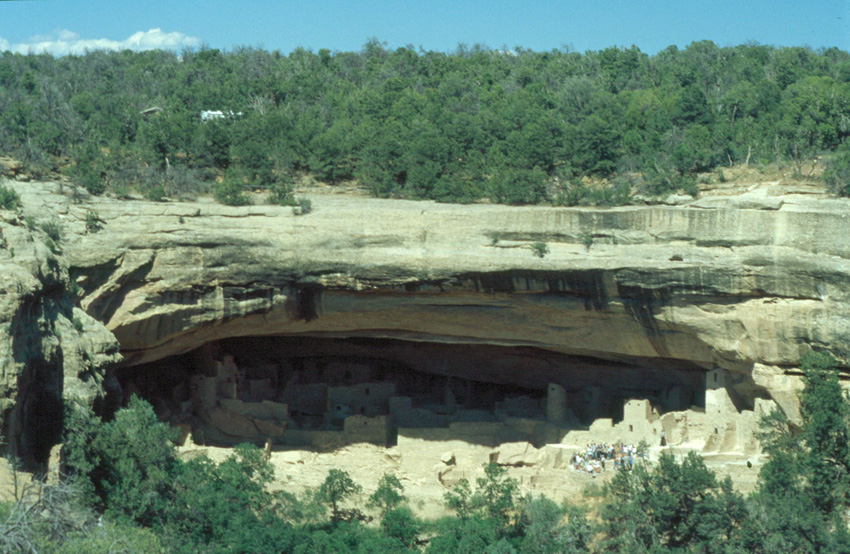
. . . and Balcony House . . .
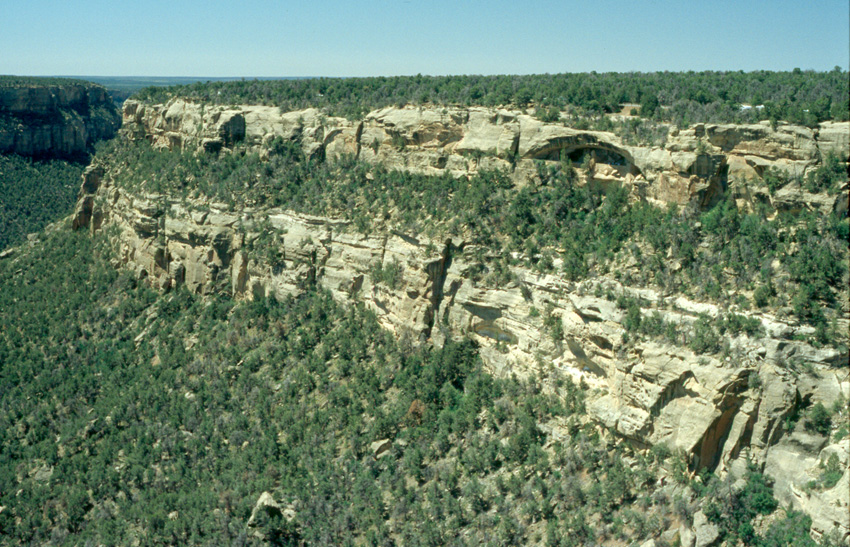
. . . . and Square Tower House.
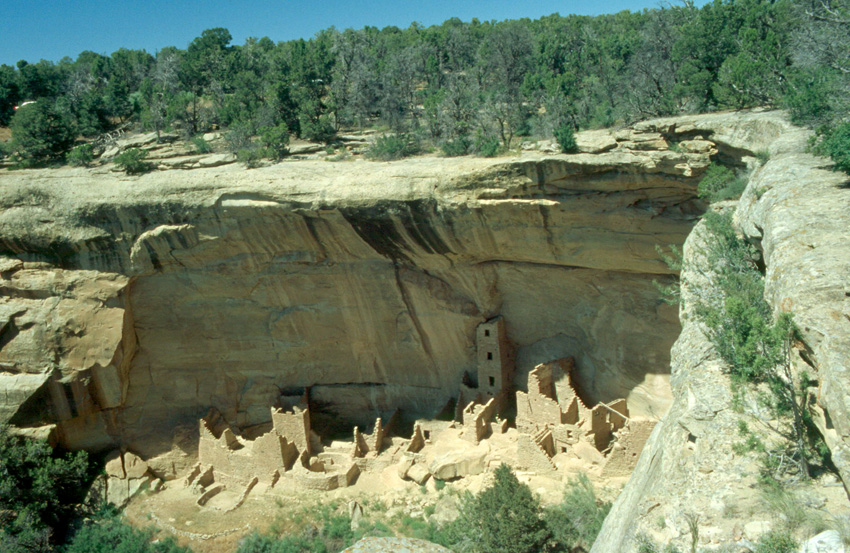
All of these structures consist of chunks of fine-grained sandstone. Under the microscope, individual sandgrains that rolled around on the Cretaceous seafloor can be seen. Those grains have subsequently been cemented together to make solid rock, where much of the "cement" is quartz that has been precipitated onto the quartz of the sand grains. In the two images below, arrows point the edges of the original sand grains; the similar material beyond them those edges is the cementing quartz.
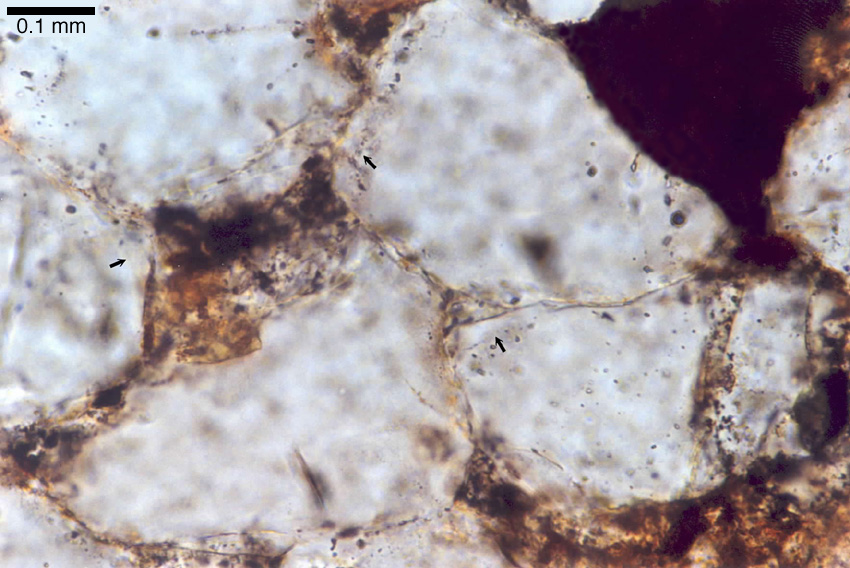
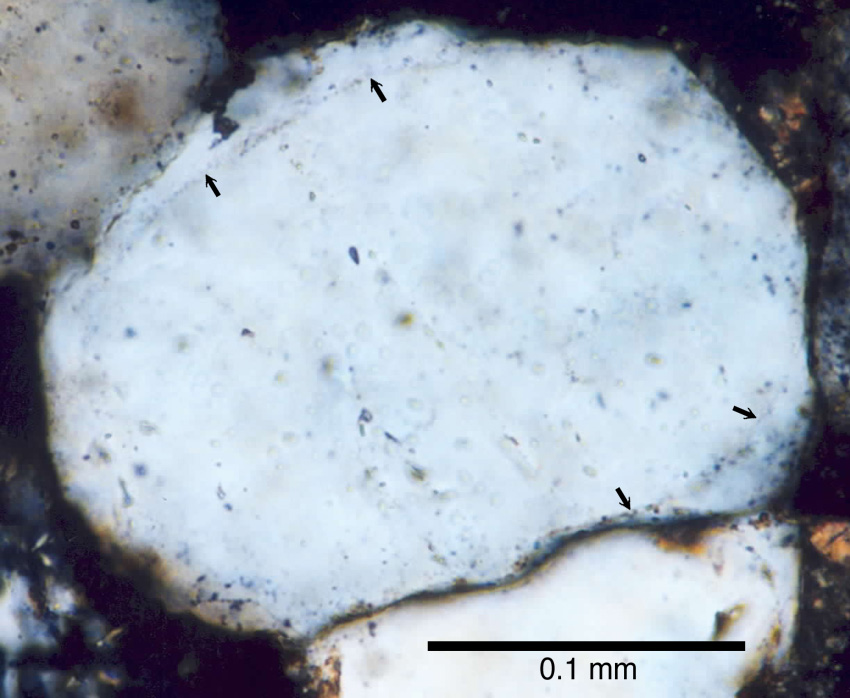
We thus see the same thing at two different scales. Standing by the ruins at Mesa Verde, we see natural stone blocks mortared together to make the cliff dwellings. With the microscope, we see that each block likewise consists of innumerable small grains of sand cemented together to make those blocks.
Acknowledgements: Historical information presented above is from the National Park Service's pamphlet regarding Mesa Verde National Park and from information in the park's Museum.